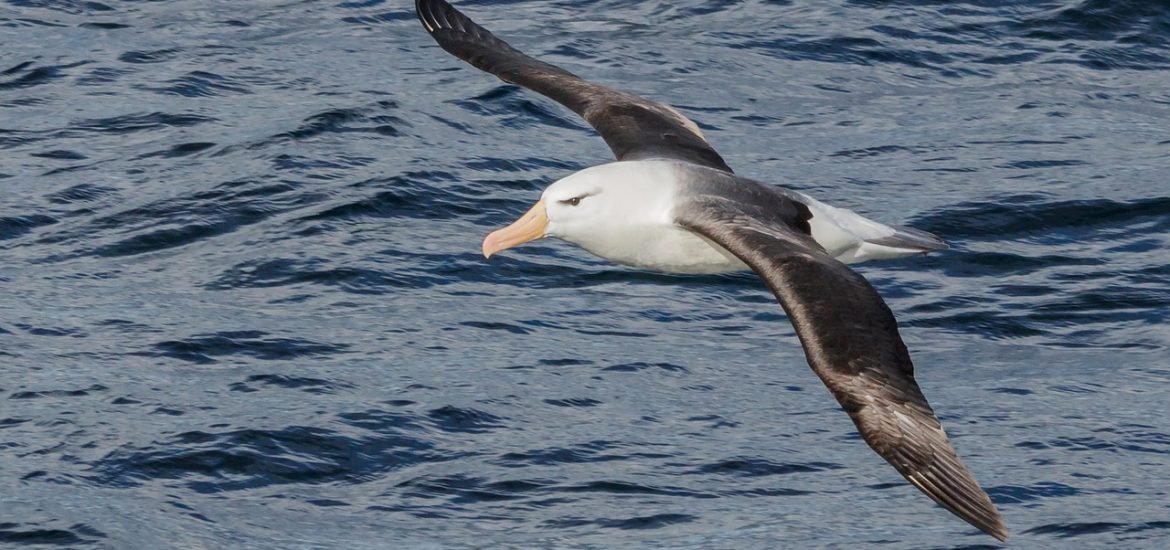
Albatrosses use infrasound to guide them on extended foraging trips, according to a study published in the journal Proceedings of the National Academy of Sciences (PNAS).
Infrasound is a low-frequency sound that is inaudible to humans but common in the marine environment. For example, microbaroms are associated with colliding ocean waves. These wavy areas are also associated with strong winds, which albatrosses rely on to fly efficiently.
Now, researchers from the University of Liverpool, UK, show that albatrosses can hear this microbarom infrasound and use it to orientate themselves while flying on long distance foraging trips. The team used GPS trackers to follow 89 albatrosses breeding in the Crozet Islands archipelago over the course of their foraging trips, which can last up to a month at sea. They then compared these flight paths with acoustic maps, which included the distribution of microbarom infrasounds.
The results revealed that albatrosses always orient towards areas of ‘loud’ microbarom infrasound, indicating that they “like” these areas when they’re flying long distances.
“How animals navigate and search for resources over large spatial scales exceeding 100s-1000s km is a fundamental question in ecology. For marine animals, such as seabirds, this question is especially intriguing due to the limited availability of visual information, meaning that other cues must be involved in movement,” said Dr Natasha Gillies, a seabird ecologist at Liverpool University’s School of Environmental Sciences. “It has been proposed that seabirds could use infrasound to help them navigate the huge expanses of featureless ocean environment that they fly over in order to forage. Our results offer the first evidence for responsiveness to infrasound in a movement context for a free-ranging animal.”
Gillies N, Martín López LM, den Ouden OFC, Assink JD, Basille M, Clay TA, Clusella-Trullas S, Joo R, Weimerskirch H, Zampolli M, Zeyl JN, Patrick SC. Albatross movement suggests sensitivity to infrasound cues at sea. Proc Natl Acad Sci U S A. 2023 Oct 17;120(42):e2218679120. doi: 10.1073/pnas.2218679120